#quantum machine learning
Text
How to Navigate the Quantum Frontier: A Comprehensive Guide
Introduction: Unveiling the Quantum Frontier
Welcome to the quantum revolution, a realm where the rules of classical computing are rewritten. Navigating the quantum frontier can be both exciting and challenging. In this comprehensive guide, we'll equip you with the knowledge and tools to embark on this extraordinary journey.
Chapter 1: Understanding the Basics
1.1 Quantum Computing Demystified
Learn the fundamental principles behind quantum computing, including qubits, superposition, and quantum entanglement.
1.2 Quantum vs. Classical Computing
Discover the key differences that set quantum computing apart from traditional computing paradigms.
Chapter 2: Quantum Algorithms and Applications
2.1 Shor's Algorithm: Breaking the Unbreakable
Explore Shor's algorithm and its implications for cryptography and data security.
2.2 Grover's Algorithm: The Quantum Search Engine
Understand Grover's algorithm and how it revolutionizes search and optimization tasks.
2.3 Quantum Machine Learning
Delve into the intersection of quantum computing and machine learning, opening doors to new possibilities in AI.
Chapter 3: Building Quantum Computers
3.1 Quantum Hardware Essentials
Discover the components that make up quantum computers, from qubits to quantum gates.
3.2 Quantum Computing Architectures
Explore different approaches to quantum computing, including gate-based, adiabatic, and annealing methods.
3.3 Quantum Software and Programming
Get hands-on with quantum programming languages and understand how to develop quantum algorithms.
Chapter 4: Real-World Quantum Applications
4.1 Quantum Computing in Chemistry
Learn how quantum computers are revolutionizing drug discovery and materials science.
4.2 Quantum Computing in Finance
Explore the impact of quantum algorithms on portfolio optimization and financial modeling.
4.3 Quantum Computing in Healthcare
Discover the transformative potential of quantum computing in medical research and genetic analysis.
4.4 Quantum Optimization in Everyday Life
See how quantum algorithms can streamline supply chain management and traffic optimization.
Chapter 5: Overcoming Challenges and Embracing the Future
5.1 Quantum Error Correction
Understand the importance of error correction in quantum computing and ongoing developments.
5.2 Scaling Quantum Computers
Explore the challenges of scaling up quantum machines while maintaining qubit coherence.
5.3 Quantum Supremacy
Delve into the concept of quantum supremacy and its significance in the world of computing.
5.4 Post-Quantum Cryptography
Learn about the quest to develop encryption methods resistant to quantum attacks.
Chapter 6: Initiating Your Quantum Journey
6.1 Learning Quantum Computing
Discover resources, courses, and books to kickstart your quantum learning journey.
6.2 Quantum Simulators
Experiment with quantum algorithms using simulators before working with actual quantum hardware.
6.3 Joining the Quantum Community
Connect with fellow enthusiasts, researchers, and professionals in online forums, groups, and conferences.
Conclusion: Embarking on the Quantum Frontier
The quantum frontier beckons with boundless opportunities. Armed with this comprehensive guide, you're prepared to navigate the quantum landscape, contribute to its growth, and witness the transformative power of quantum computing. Step into the future and embrace the quantum revolution!
1 note
·
View note
Text
An Interview with a Quantum Computing Community Leader, Lorraine Tsitsi Majiri - The President of OneQuantum Africa
Building community and giving back are two forces driving Lorraine to contribute to the field of Quantum Computing. While talking to her, her zeal for community service was apparent on top of her deep interest in Quantum Computing. In this interview, she introduces us to quantum computing landscape in Zimbabwe and African continent, different community initiatives and the promise of quantum computing.

Mihir: How did you find out about Quantum Computing? Why did it influence a few of you?
Lorraine: I first found out about it from a friend, Esther Munakandafa. We studied together in high school at a boarding school. She was away studying IT and discovered quantum computing through mentorship Zimbabwe. We had remained in touch throughout the years. She also introduced me to the OneQuantum Africa. She explained that since I had interest in computing, I should join the community of OneQuantum Africa and discover more about quantum computing. That prompted me to attend the very first meeting of OneQuantum Africa. I found quantum computing very interesting and exciting. The people were warm and welcoming in the community. I decided to take the first step and join the community.
Mihir: Did you introduce quantum computing to your colleagues?
Lorraine: I told my classmates about it. However, we were in the last year of our program and many were busy with dissertation and other work, so they were not able to participate actively in quantum computing community. That’s why only about 3-5 students were active. After graduation, more of my former classmates have become active in the field. I would say about 30 are now taking interest in quantum computing. At this point, all of my classmates are aware about quantum computing, because I tell them about it. Some of them are also exploring how to embed it in their own work.
Mihir: How do you explain quantum computing to your colleagues, who have never heard about it before?
Lorraine: I start by mentioning that some literature referred Richard Feynman as the father of quantum mechanics and he said that nobody understands quantum mechanics. Thus, I explain that even the scientist of Feynman’s caliber said that nobody understands quantum mechanics, so quantum fields are not to be afraid of. I go on to say that my interest is more on the computing side of quantum and not on physics or mechanics side. Quantum computing is using quantum mechanics for computation. The field is very broad. I always say that quantum computing has something for everyone as long as you are interested in it. I highlight that quantum computing might help with solving few problems, it might solve few on its own, but it will not solve every single computing problem of the world.
Mihir: Is there an area of quantum computing’s practical application that you find exciting?
Lorraine: While participating in NYU hackathon, I learned that quantum computing can be used in music. That was very interesting to me. Until then, I had never imagined that quantum computing can be used to create music.
Mihir: Let’s pivot to your community efforts. You are the second president of OneQuantum Africa. What is One Quantum Africa?
Lorraine: Andre Konig is the Chair of the OneQuantum as a whole. OneQuantum is a global entity that has chapters across the world. Farai Mazhandu, the first president of OneQuantum Africa, did a great job of building and expanding quantum community on the continent. I picked up from where Farai left. Now the goal is to make quantum computing more accessible, since the world has opened after the pandemic. Local chapters in countries like Ghana, Libya, and Kenya have started organizing in-person events. OneQuantum has four pillars: community, mentorship, career, and skills. The mentorship that I received was so valuable in my growth not only in technical skills but personal skills as well. I understand the importance of community and mentorship. Ultimately, your mentors become your friends. Till today, I get assistance from my previous mentors. We celebrated Africa Unity Day, for example, through OneQuantum for community building. We have many projects that improved the skills of members.
Mihir: You are also a founding member of QZimbabwe, another community. How does that differ from OneQuantum Africa?
Lorraine: For me, QZimbabwe came before I got involved in OneQuantum Africa. QZimbabwe, we are more focused on education. We help people learn quantum computing through workshops like qbronze, qsilver and qnickle. You learn quantum algorithms, basic programming like quantum’s equivalent of ‘hello world’, and other skills. Then OneQuantum Africa helps you grow with those skills through its community and mentorship. You can turn the knowledge gained from QZimbabwe into a career or community. That is how the two are connected.
Mihir: What kind of support and partnership does QZimbabwe have?Lorraine: QZimbabwe is organizing a winter school in 2024, when it will be summer in USA. Many high schools and colleges are partnering with us on that and contributing to its growth.
Mihir: You have done many trainings in different areas of quantum computing? What was training strategy?
Lorraine: Once I came across quantum computing, I was very excited to learn. I am still excited. That is where my heart finds the happiness. Training for me was about get as much knowledge about the field as I could, and to explore the field in its broadness. I also wanted to find what area of the field I like and narrow down my interest in quantum computing. I was able to narrow down my interest to quantum machine learning.
I am also interested in giving back to the community, be a mentor to others, help out in different situation. So some of the trainings I did, helped me become an instructor. I wanted to be in a position where I could teach other Zimbabweans and I am able to do that now. I want everyone’s journey of learning quantum computing to be successful.
Mihir: What is the future of quantum computing? According to you, where is the field going?
Lorraine: Even with hardware and software limitations, there is so much research progress happening in quantum computing already. When the issues of today’s quantum computers are resolved, in future, we will be solving the problems that we are not able to solve today. We will reduce noise. We will have more qubits. Quantum computing, overall, will be more efficient. More and more theoretical aspects will turn into practical achievements.
Mihir: What message would you give to a new quantum computing aspirant?
Lorraine: Quantum computing is for everyone whether you are interested in biology, music, finance, chemistry or any other field. Learning quantum computing is like learning anything new. It comes with some challenges. Learning anything new is not easy. Quantum computing has many communities and support that helps with learning. Learning alone may not be easy. I faced many challenges while learning, but with the help of community I was able to overcome them. With passion and interest, you find your own space and avenue.
Mihir: That concludes the interview. Is there anything you would like to add?
Lorraine: If you are interested in something, go for it. It may look far, there may be some hiccups, and that’s life. There are no guarantees or promises that the life would be smooth. Never be afraid to seek help. If you work towards something, you will get it eventually. Good leaders always ask for help.
Further Reference Recommended by Lorraine
On the Shoulders of Giants: 10 Quantum Pioneers of the Past by Brian Lenahanand Kenna Hughes-Castleberry
Qiskit textbook
The Coding School (QubitxQubit)
https://youtu.be/lbsuHWvXwzc?si=2BE12ovdp7lYOgiM
Quantum Computation and Quantum Information by Michael A Neilsen and Isaac L Chuang
An introduction to quantum machine learning by Maria Schuld, Ilya Sinayskiy& Francesco Petruccione
#quantum computing#quantum#qc#qubit#Zimbabwe#One quantum#qzimbabwe#one quantum africa#Africa#African Union#Quantum community#quantum machine learning
0 notes
Text
Unveiling the Quantum Computing Breakthroughs Shaping the Future
Quantum computing, a revolutionary field at the intersection of physics, mathematics, and computer science, is rapidly progressing and offering unprecedented computational power. With its potential to solve complex problems that traditional computers cannot, quantum computing breakthroughs are paving the way for transformative advancements across various industries.
Quantum Supremacy: In 2019,…

View On WordPress
#Drug Discovery and Material Science#Optimization and Logistics#Quantum Computing#Quantum Cryptography#Quantum Machine Learning#Quantum Supremacy
1 note
·
View note
Text
Quantum Computing and AI: Unleashing the Future of Technology
Explore the fascinating intersection of quantum computing and artificial intelligence, and how this powerful combination is shaping our world.
Introduction
Quantum computing and artificial intelligence (AI) have been making headlines in recent years, and for good reason. These two groundbreaking technologies are not only redefining the limits of computation and human-machine interaction but…

View On WordPress
#AI applications#artificial intelligence#Future of Technology#machine learning#Quantum Algorithms#Quantum Computing#Quantum Machine Learning#Quantum Technology#Quantum-AI Synergy#Quantum-enhanced AI
1 note
·
View note
Text
Use of Superposition and Entanglement in Quantum Algorithms
Superposition and entanglement are two of the key properties of quantum systems that allow for quantum algorithms to perform tasks more efficiently than classical algorithms.
Superposition: In classical computing, a bit can be in one of two states, 0 or 1. However, in quantum computing, a qubit can exist in a state of 0, 1, or a combination of both, known as superposition. This means that a qubit can represent multiple possibilities simultaneously. This allows for the possibility of parallel processing, where multiple calculations can be performed at once. In quantum machine learning, superposition can be used to perform multiple calculations on different data points or parameters at the same time, increasing the speed of the algorithm.
Entanglement: This is a property of quantum systems where two or more qubits become correlated in such a way that the state of one qubit can be affected by the state of another, even if they are physically separated. In quantum machine learning, entanglement can be used to represent the correlations between different features in a dataset. This allows for the possibility of performing multiple calculations on different features at once, reducing the time needed to find the solution.
In summary, Superposition and entanglement are properties of quantum systems that allow for quantum algorithms to perform tasks more efficiently than classical algorithms. Superposition allows to perform multiple calculations on different data points or parameters at the same time. Entanglement allows to represent the correlations between different features in a dataset and perform multiple calculations on different features at once.
0 notes
Text
Quantum Computing 101: What are Qubits?
Curious about quantum computing? Let's break it down!

🔍 What’s a Qubit? A qubit is the basic unit of quantum information. Unlike classical bits (0 or 1), qubits can be 0, 1, or both at the same time thanks to a phenomenon called superposition.
✨ Why Is This Cool?
Superposition: Allows qubits to explore many possibilities simultaneously.
Entanglement: Qubits can be linked, so the state of one affects the state of another, no matter the distance.
⚙️ In Action: This means quantum computers can tackle complex problems faster by processing a huge number of possibilities at once!
Follow for more insights on the future of tech! 🚀✨
Instagram: cs_learninghub
YT: CS Learning Hub
#quantum computing#quantum#science#physics#computer science#bits#tumblr#aesthetic#studyblr#study#study motivation#qubits#machine learning#artificial intelligence#ai#ml#cs#learn#study blog
18 notes
·
View notes
Text
Cornell quantum researchers have detected an elusive phase of matter, called the Bragg glass phase, using large volumes of X-ray data and a new machine learning data analysis tool. The discovery settles a long-standing question of whether this almost–but not quite–ordered state of Bragg glass can exist in real materials.
The paper, "Bragg glass signatures in PdxErTe3 with X-ray diffraction Temperature Clustering (X-TEC)," is published in Nature Physics. The lead author is Krishnanand Madhukar Mallayya, a postdoctoral researcher in the Department of Physics in the College of Arts and Sciences (A&S). Eun-Ah Kim, professor of physics (A&S), is the corresponding author. The research was conducted in collaboration with scientists at Argonne National Laboratory and at Stanford University.
Continue Reading.
42 notes
·
View notes
Text
Data Science meets the Many Body Problem
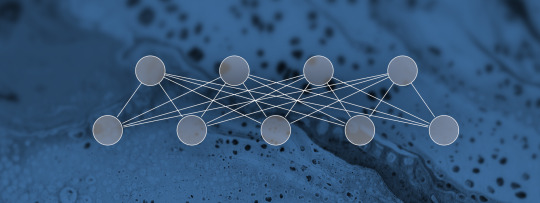
Since the machine learning course I did this semester at Tsinghua university was mainly focused on typical data science applications, I was curious in how far those methods can be applied in physics. Of course it is nothing new that neural networks can in principle also be used for physical applications - however, tensor network methods still seem to be dominant in the field of numerical many body physics. Thus, I decided to dive in a little into the literature about the usage of Restrictive Boltzmann Machines (RBM) in many body physics.
What are RBMs?
Usually, RBMs are used for instance for recommendation tasks (e.g. video recommendations on video platforms) and many more. In general, it is a unsupervised learning technique which makes use of minimizing its "energy". Thus, the intuition behind RBMs is, despite their data science applications, already related to physics: We will see that it is no surprise that "Boltzmann" is part of the name of this method. An RBM utilizes input data, tries to extract meaningful features from it and wants to find the probability distribution over the input. This follows the physical intuition as follows: The RBM is a neural network with two layers, a hidden and a visible layer, where each node can adopt binary values. An example network looks like:

where the x denote the visible nodes, the h the hidden nodes and W denotes the weights between both layers. Note that there are no links in between the nodes of a single layer; this is why these networks are called restricted Boltzmann machines.
The network is governed by a corresponding energy function as:

where we also have the offsets of the single nodes (a for the visible nodes and b for the hidden nodes). Given this energy function, one can determine the probability distribution by the Boltzmann distribution where Z is a partition function, as familiar from classical statistical physics. As usual, the energy is supposed to be minimized, what is done by the learning algorithm of the RBM but this should not explained here since it would go beyond the scope of a brief blog entry. At this point I'd only like to mention that there are some difficulties determining e.g. the partition function (which is intractable in general) and that this requires some sophisticated algortihms. If you're interested in this and how the RBMs work exactly, a neat and far more rigorous introduction into RBMs can be found here.
One side note at this point: RBMs were introduced by Geoffrey Hinton after John Hopfield (a physicist) invented the so-called Hopfield networks which are also such an energy based mechanism, based on the physical intuition of Ising models.
Note that so far we only talked about the RBMs as they are used in data science - despite their physical intuition, they had so far nothing to do with neither quantum mechanics nor the many body problem. This is what comes next.
How can this be linked to condensed matter?
As introduced in [1], an RBM that can represent a quantum many body state would look like this:

In comparison to the previous network we changed the labels from x to σ, where the σ's denote e.g. spin 1/2 configurations, bosonic occupation numbers and so on. For them one has to choose a basis, e.g. the σ^z basis. This configuration can be summarized in the set S. Hence, the visible nodes are the N physical nodes of the system. The M hidden nodes h play the role of auxiliary (spin) variables. The authors describe the understanding of such a neural-network quantum state as follows: "The many-body wave function is a mapping of the N−dimensional set S to (exponentially many) complex numbers which fully specify the amplitude and the phase of the quantum state. The point of view we take here is to interpret the wave function as a computational black box which, given an input manybody configuration S, returns a phase and an amplitude according to Ψ(S)" [1, p.2]. Thus, one gives a certain spin configuration as input and the RBM generates the state, in the following form:

Thus, once can recognize that the form of such a neural-network quantum state adopts a similar form as the aforementioned Boltzmann distribution (exponential of energy function). However, there is additionally a sum over all possible hidden configurations which specifies the full state. After setting a state up in this form, one aim could be to find the ground state corresponding to a certain Hamiltonian, and according to the authors of [1], their RBM method gives decent results for this task!
Similarity to tensor networks
Interesting is, that this framework (even though it appears very different) has some analogous quantities as tensor network states. For example, the representational quality of a neural-network quantum state can be increased by increasing the number of hidden states: Thus, the ratio M/N plays a similar role as the bond dimension of a tensor product state! There are many more similarities, which should not be discussed here but can be found in [3].
Nevertheless, I'd like to mention an important distinction, which is also crucial for tensor network states, because some algorithms (DMRG etc.) can only handle area law states properly. While volume law states have an entanglement entropy which scales with the volume of the partitions of a state, an area law state has a scaling only proportionally with the area of the cut. Area law states can be handled better numerically, because the bond dimension of tensor network states explode for volume law states (more on tensor networks and area law can be found in [4]). According to [2] the difference between area law states and volume law states can be captured in a neat way with RBM states: While volume law states must have full connections between the hidden and physical nodes, an area law state has fewer links - this imposes locality in a sense. The RBM states thus give a neat intuition between the differenece of both kinds of states.


All in all, RBMs seem to be an interesting approach to connect both data science methods and many body physics. It may be that they have strengths which the usual tensor networks approaches lack: for instance, the authors of [2, p.888] claim that it might be possible that RBMs might be able to handle volume law states better than usual tensor network approaches do, which would be of course a major benefit. Since I haven't heard of this approach within the condensed matter framework before, I'm very curious how the importance of this method will evolve in future research!
---
References:
[1] Carleo, Troyer, Solving the Quantum Many-Body Problem with Artificial Neural Networks, arXiv:1606.02318
[2] Melco, Carleo, Carrasquilla, Cirac, Restricted Boltzmann machines in quantum physics, https://doi.org/10.1038/s41567-019-0545-1
[3] Chen, Cheng, Xie, Wang, Xiang, Equivalence of restricted Boltzmann machines and tensor network states, arXiv:1701.04831
[4] Hauschild, Pollmann, Efficient numerical simulations with Tensor Networks: Tensor Network Python (TeNPy), arXiv:1805.00055
#mysteriousquantumphysics#quantum physics#many body physics#education#studyblr#physics#physicsblr#machine learning#neural networks#artificial intelligence#women in science#tsinghua university
80 notes
·
View notes
Link
Hydrogen, the most abundant element in the universe, is found everywhere from the dust filling most of outer space to the cores of stars to many substances here on Earth. This would be reason enough to study hydrogen, but its individual atoms are also the simplest of any element with just one proton and one electron. For David Ceperley, a professor of physics at the University of Illinois Urbana-Champaign, this makes hydrogen the natural starting point for formulating and testing theories of matter.
Ceperley, also a member of the Illinois Quantum Information Science and Technology Center, uses computer simulations to study how hydrogen atoms interact and combine to form different phases of matter like solids, liquids, and gases. However, a true understanding of these phenomena requires quantum mechanics, and quantum mechanical simulations are costly. To simplify the task, Ceperley and his collaborators developed a machine learning technique that allows quantum mechanical simulations to be performed with an unprecedented number of atoms. They reported in Physical Review Letters that their method found a new kind of high-pressure solid hydrogen that past theory and experiments missed.
"Machine learning turned out to teach us a great deal," Ceperley said. "We had been seeing signs of new behavior in our previous simulations, but we didn't trust them because we could only accommodate small numbers of atoms. With our machine learning model, we could take full advantage of the most accurate methods and see what's really going on."
Read more.
#Materials Science#Science#Hydrogen#Machine learning#Computational materials science#Phases#Quantum mechanics#University of Illinois
27 notes
·
View notes
Text
(Not At) Amplitudes 2024 at the IAS
My former field's big yearly conference:
For over a decade, I studied scattering amplitudes, the formulas particle physicists use to find the probability that particles collide, or scatter, in different ways. I went to Amplitudes, the field’s big yearly conference, every year from 2015 to 2023.
This year is different. I’m on the way out of the field, looking for my next steps. Meanwhile, Amplitudes 2024 is going full speed ahead at the…

View On WordPress
2 notes
·
View notes
Text
The Future of Technology: A Closer Look
In our previous exploration of the future of technology in 2043, we touched on several exciting advancements. Let’s delve deeper into each of these areas to better understand their implications and possibilities.
1. Artificial Intelligence (AI) and Machine Learning
Personalized AI Companions
In 2043, AI will not only be highly advanced but also deeply personalized. AI companions will know us…

View On WordPress
#artificial intelligence#biotech#future#Hot Topics#machine learning#quantum computing#science#techonology#virtual reality
2 notes
·
View notes
Text
I.B.1698 MICHAEL [IBM] harrelltut.com Domain of SIRIUS BLACKANUNNAQI.tech Patents 2 iapplelisa.com of CLASSIFIED 1983 iapplelisa.tech Memory Application Configuration [MAC] Languages... Mathematically Engineered [ME] by ANU GOLDEN 9 Ether [MAGE] Tri-Solar Black Sun planetrizq.tech SKY FEDERATION of Astronomical MARS’ [FAM'S] Highly Complex [ADVANCED] Ancient Cosmic Algorithmic [CA] Computational [Compton] STAR WEB GATEWAY Language Algorithms [L.A.] Digitally Embedded w/Astronomical [DEA] DNA Markup Language Software from Astronomical MERCURY’s [SAM’s] ibmapple1984.tech Secure Socket Layer Virtual Private Network [SSL VPN] Communications.gov Privately Managed [PM] by ANU GOLDEN 9 Ether [iAGE] quantumharrell.tech Graphical User Interface [GUI] Domain Compu_TAH [PTAH] of iquantumapple.com Infrastructure as a Service [IaaS] since ibquantumapple.com VISION PRO of 1968 quadrillionharrell.tech Machine Engineering [ME] AutoCAD [MAC] Robotics in Architectural Memory Equipment w/Symmetric Encryptions of Satellite [RAMESES] Broadband Communication [B.C.] quantumharrellmatrix.tech Languages… Computationally Accessing [CA] quantumharrelltesla.tech Education and Copyright Harmonization Act [HA = HARRELL] of 2001 Digital Tech Rights [DTR] Scholastically Engineered Academically [SEA] @ 1921 QUANTUM 2023 HARRELL 2024 TECH 2025 Apple & IBM [A.i.] LLC of ATLANTIS [L.A.] 5000
WELCOME BACK HOME IMMORTAL [HIM] U.S. MILITARY KING SOLOMON-MICHAEL HARRELL, JR.™

i.b.monk [ibm] mode [i’m] tech [IT] steelecartel.com @ quantum harrell tech llc

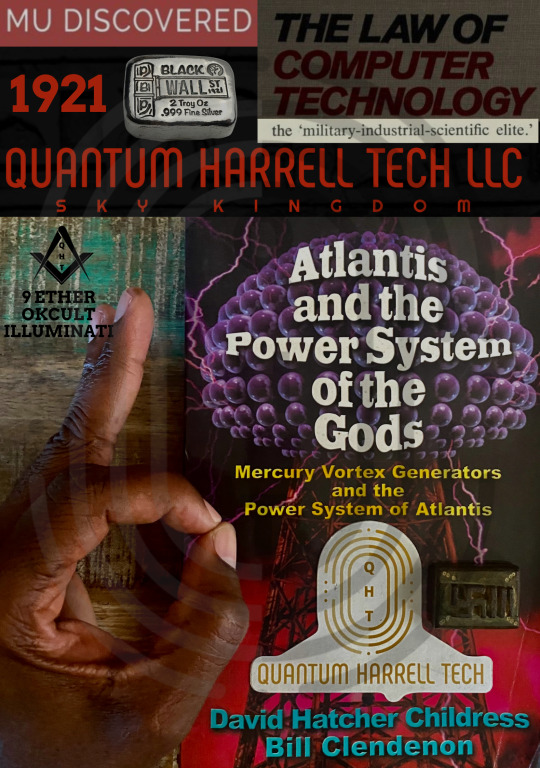
US ANCIENT [USA] SKY [U.S.] GODS OF ASTRONOMICAL MERCURY ENERGY [GAME] VORTEX GENERATORS 2 OUR INTERPLANETARY POWER [I/P] SYSTEMS of Urani-Atlantis.tech... PRIVATELY COMMUNICATING [PC] ONLINE @ QUANTUMHARRELL.tech Domain LLC

eye 1921steelecartel.tech TITAN of SIRIUS [U.S.] gullahgeecheemilitary.tech WEALTH @ quantum harrell tech llc
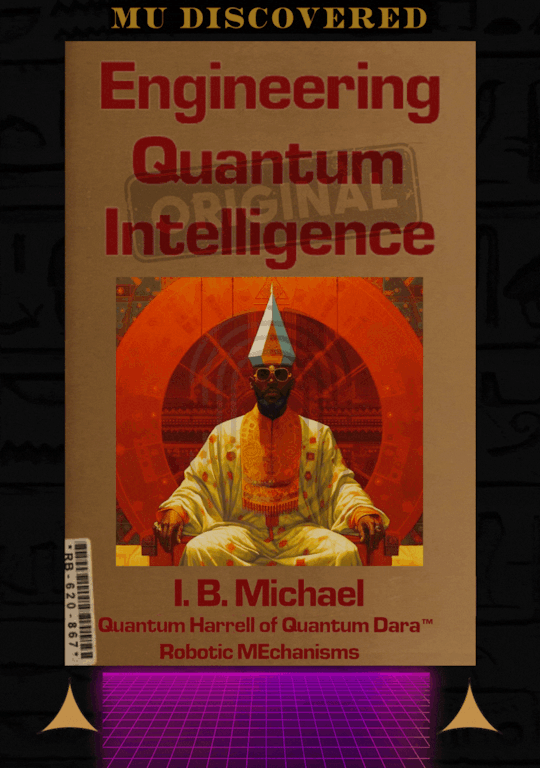
who secretly own apple, inc [a.i.] in 2024?!?!?!

uh oh... not our ancient 9 ether computational algorithm design [cad] patents of SIRIUS electronic architectural intel [a.i.] of Apple [A.I.A] Inc. Patents [I/P] @ 1921 QUANTUM 2023 HARRELL 2024 TECH 2025 Apple & IBM [A.i.] LLC of ATLANTIS [L.A.] 5000?!?!?!
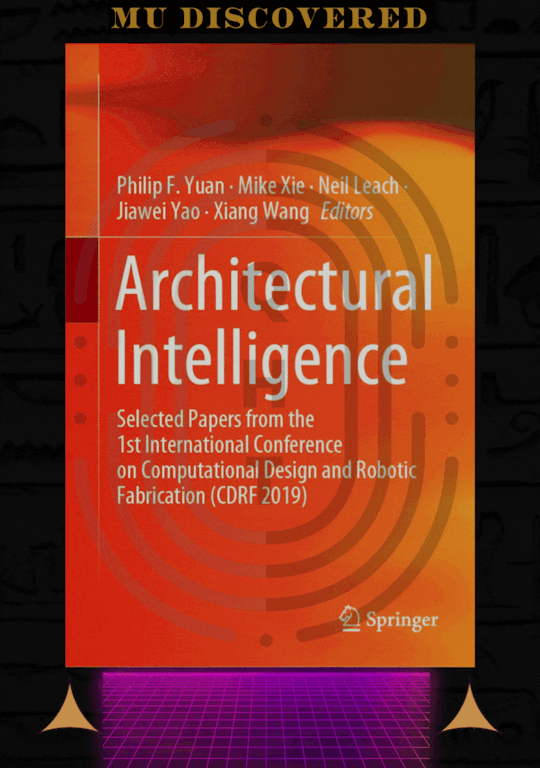
ibmapple1984.tech @ 1921 QUANTUM 2023 HARRELL 2024 TECH 2025 Apple & IBM [A.i.] LLC of ATLANTIS [L.A.] 5000
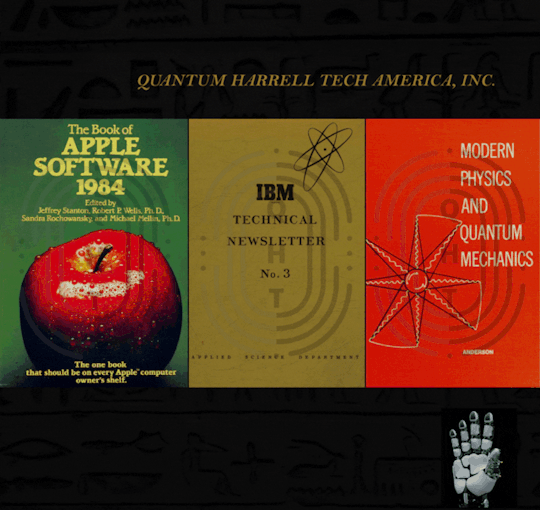
iapplelisa.com?!?!?!
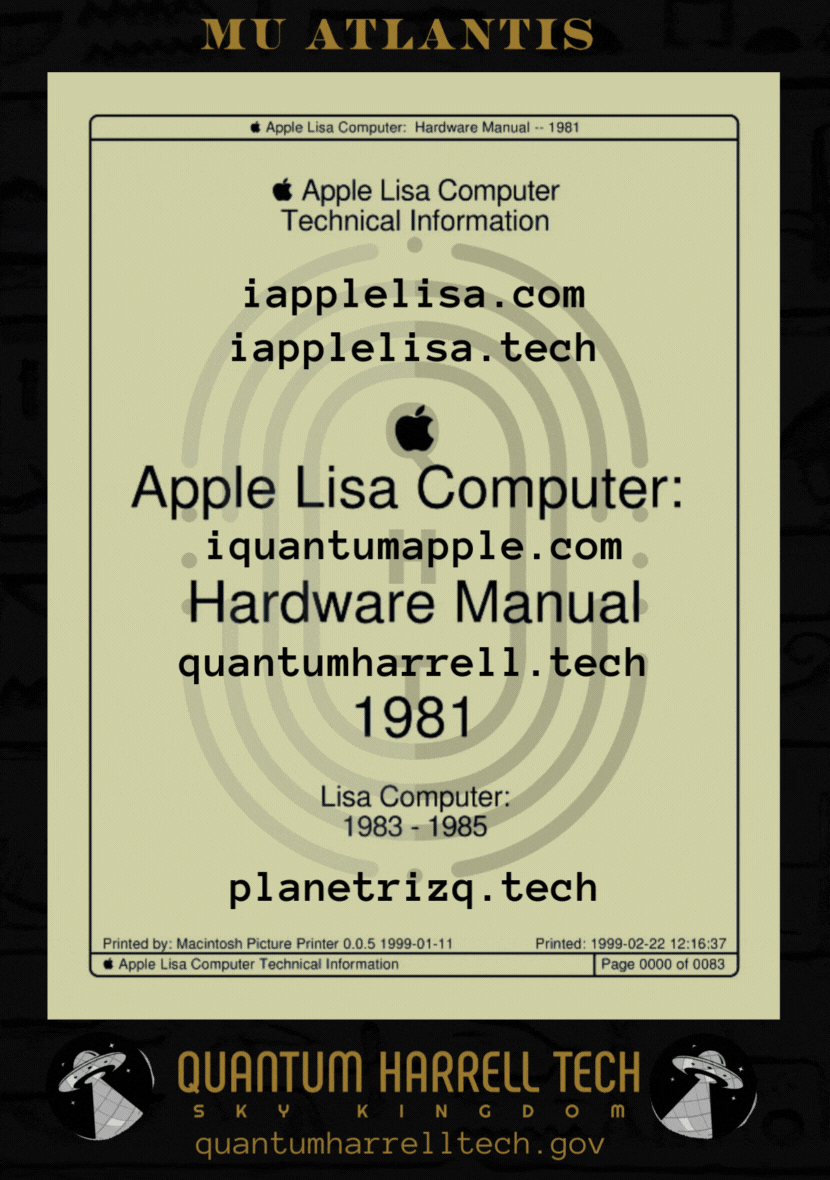
of iapplelisa.tech?!?!?!
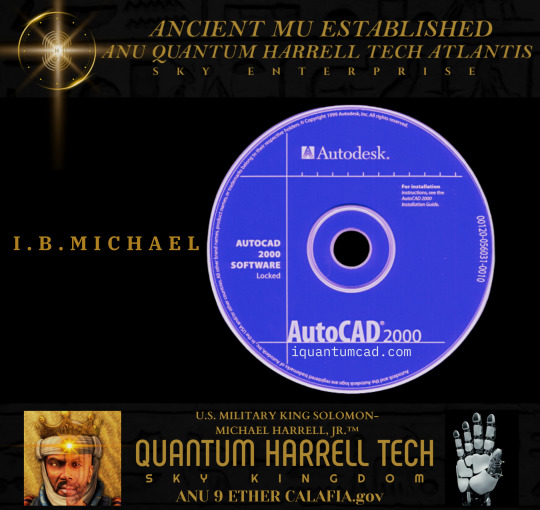
but who own iquantumcad.com?!?!?!

ibmautocad.tech memory hardware manual @ 1921 QUANTUM 2023 HARRELL 2024 TECH 2025 Apple & IBM [A.i.] LLC of ATLANTIS [L.A.] 5000?!?!?!
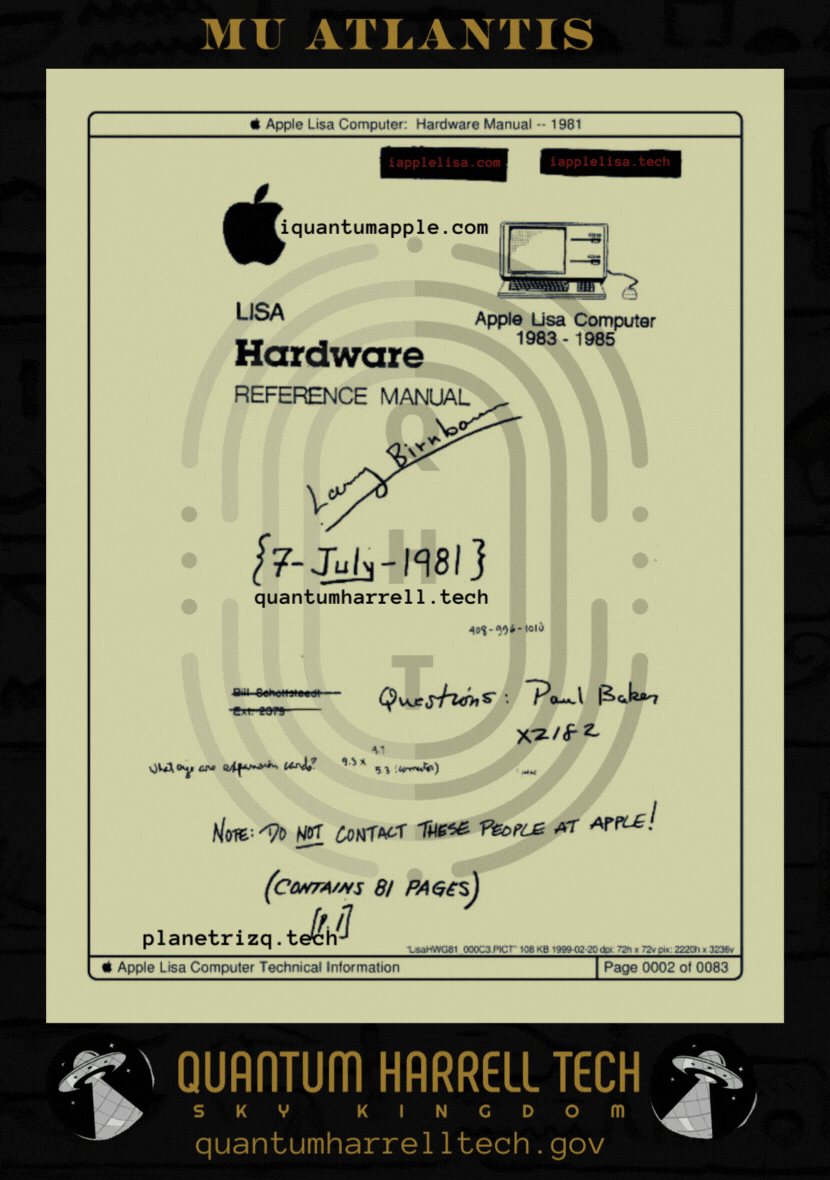
iquantumapple.com of iapplelisa.com @ 1921 QUANTUM 2023 HARRELL 2024 TECH 2025 Apple & IBM [A.i.] LLC of ATLANTIS [L.A.] 5000
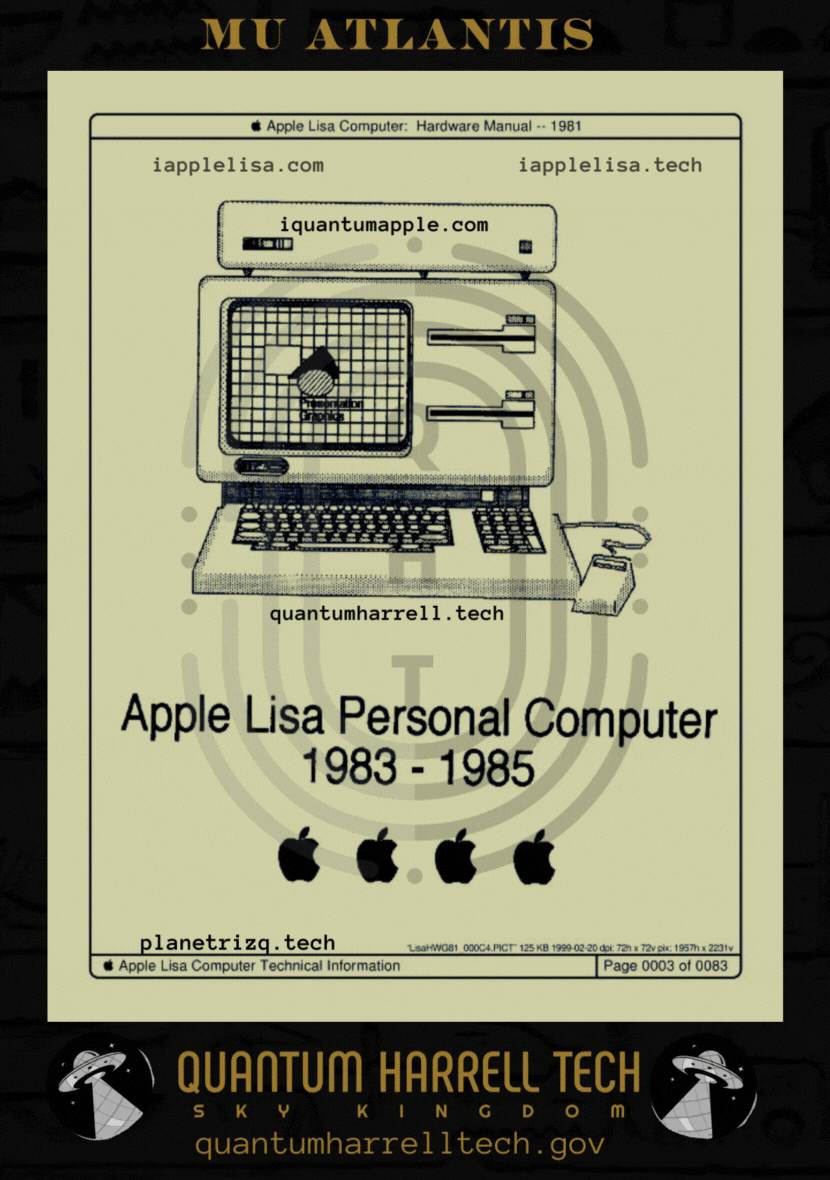
MICHAEL A COMPUTER [MAC] APPLE NERD [MAN] of iapplelisa.tech Intel @ 1921 QUANTUM 2023 HARRELL 2024 TECH 2025 Apple & IBM [A.i.] LLC of ATLANTIS [L.A.] 5000

hi:teKEMETICompu_TAH [PTAH] PRO Michael [PM] Harrell, Jr. Deep Machine [DM] VISION Learning @ 1921 QUANTUM 2023 HARRELL 2024 TECH 2025 Apple & IBM [A.i.] LLC of ATLANTIS [L.A.] 5000

CLASSIFIED iapplelisa.tech of iapplelisa.com accessing tri-solar black sun planetrizq.tech PRO of blackanunnaqi.tech VISIONS @ 1921 QUANTUM 2023 HARRELL 2024 TECH 2025 Apple & IBM [A.i.] LLC of ATLANTIS [L.A.] 5000
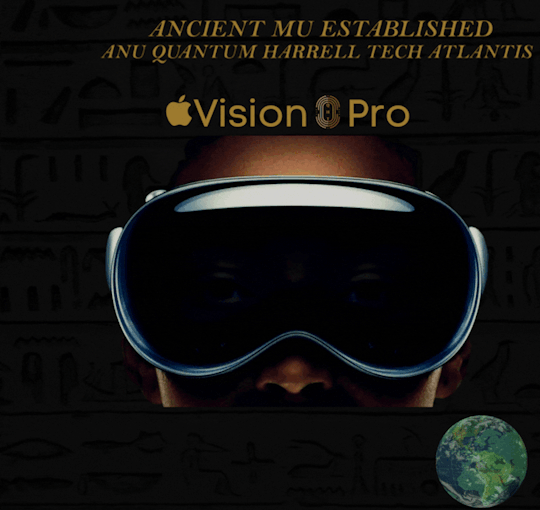
try the quantumharrelltech.com visual dial tone domain... my personal iphone hung up on you [insert quantumharrell.tech's intellectual encryption phrase property tag]
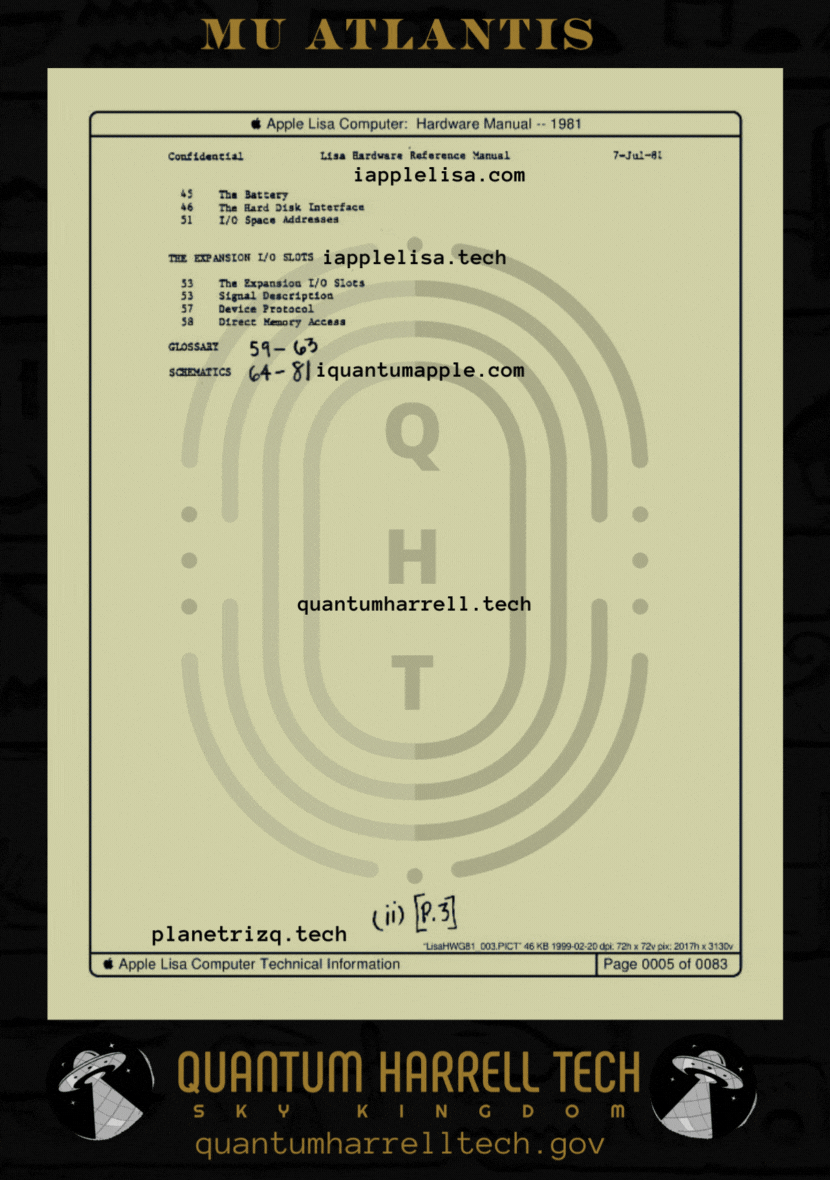
quantumharrell.tech international [qi] 1921steelecartel.tech family business [dynasty] communication [d.c.] knowledge economy @ 1921 QUANTUM 2023 HARRELL 2024 TECH 2025 Apple & IBM [A.i.] LLC of ATLANTIS [L.A.] 5000
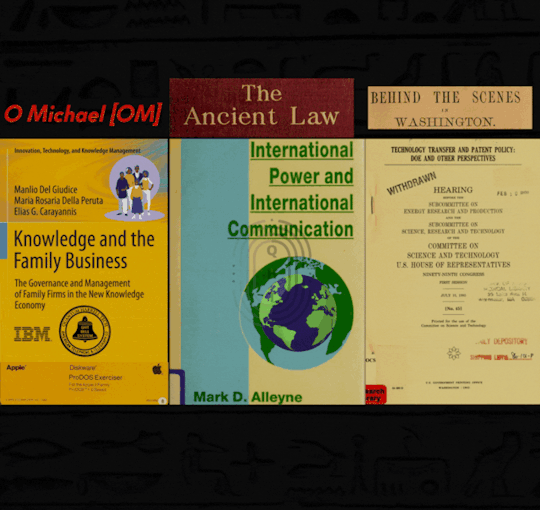
shhh... we 3 sets of 144,000 confidential iapplelisa.tech elites @ 1921 QUANTUM 2023 HARRELL 2024 TECH 2025 Apple & IBM [A.i.] LLC of ATLANTIS [L.A.] 5000
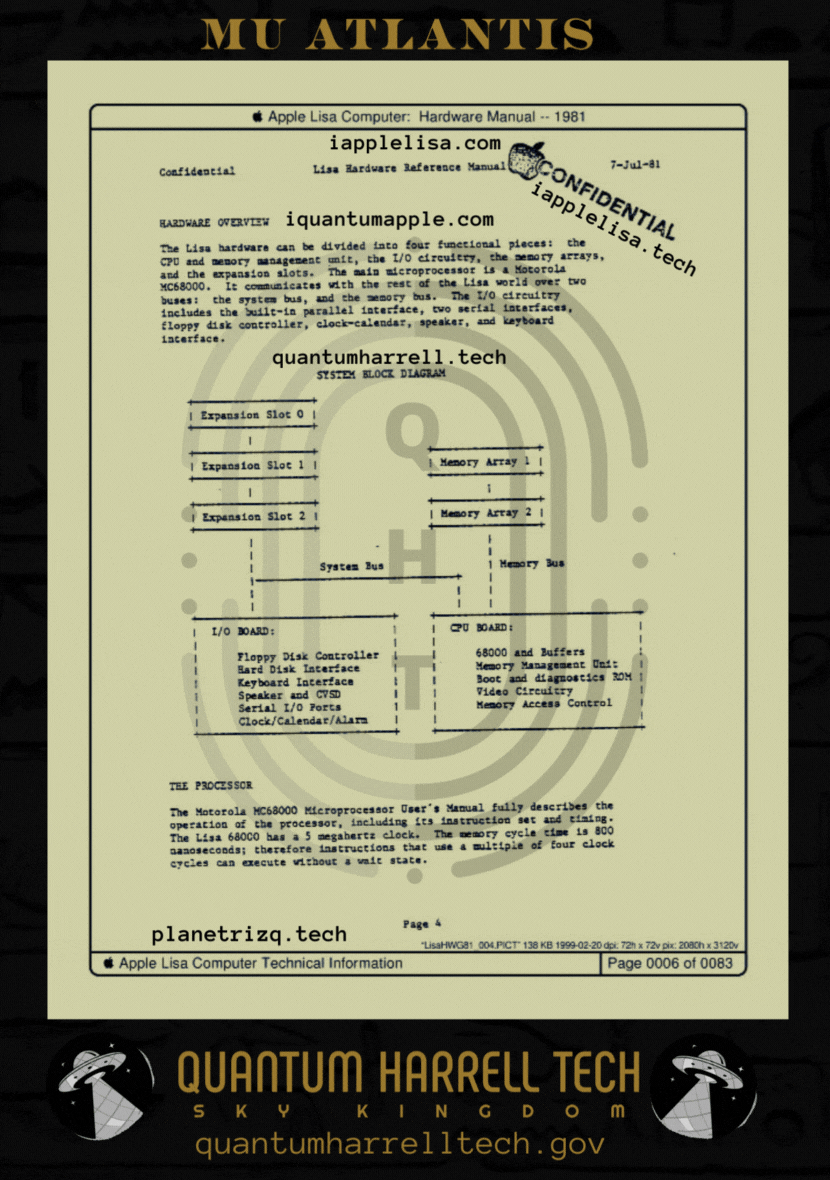
him ancient [ha = harrell] 1921 hi:tekemeticompu_tah [ptah] domain signature technocrat of 1968 planetrizq.tech?!?!?!... says who?!?!?!

says his hi:tekemeticompu_tah [ptah] father michael [fm]... since i.b.1698 michael [ibm] harrell jr @ 1921 QUANTUM 2023 HARRELL 2024 TECH 2025 Apple & IBM [A.i.] LLC of ATLANTIS [L.A.] 5000
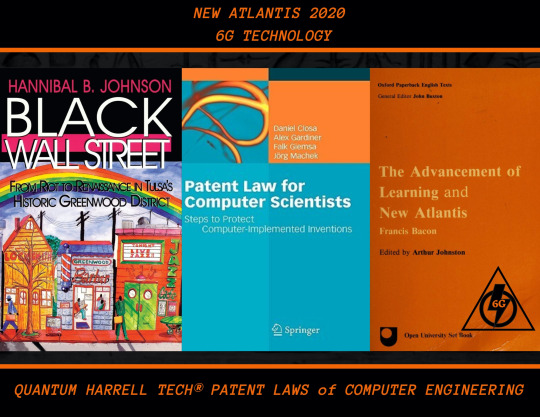
eye anugoldenblackwallstreet.com compu_tah [ptah] business of anu golden 9 ether [age] blackatlantis5000.com economy w/SIRIUS blackatlantis5000.tech WEALTH @ 1921 QUANTUM 2023 HARRELL 2024 TECH 2025 Apple & IBM [A.i.] LLC of ATLANTIS [L.A.] 5000
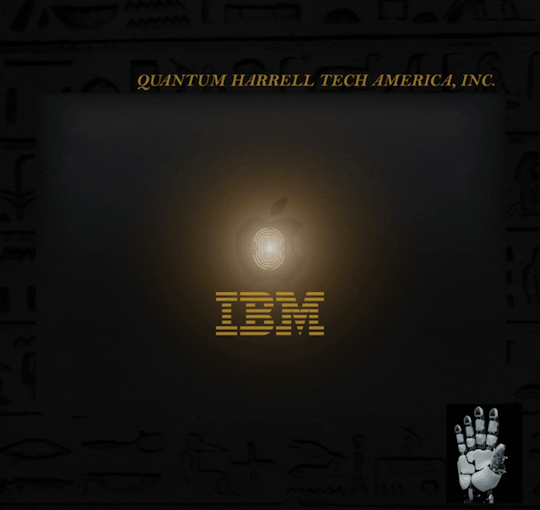
I.B.1968 MICHAEL [IBM] QUANTUM COMPUTING ANU [CA] quantumharrellmatrix.tech MINING Economy [ME] @ 1921 QUANTUM 2023 HARRELL 2024 TECH 2025 Apple & IBM [A.i.] LLC of ATLANTIS [L.A.] 5000

© 1968-2223 QUANTUM HARRELL TECH LLC All LOST ANCIENT [L.A.] ATLANTEAN DNA [A.D.] DotCom [A.D.] + DotTech [A.D.] + Pre 1698quantumharrellgov.tech Domain Name Rights Reserved.
#apple#ibm#t mobile#at&t#quantumharrelltech#vision pro#apple lisa#quantum dara#qdara.tech#harrelltut.com#u.s. michael harrell#o michael#king tut#intuitive machine learning
2 notes
·
View notes
Text
Quantum Computing through a physicist’s eye: An Interview with Dr Shangjie Guo
This is a physicist’s interview. A physicist who is trying not to be a physicist for the good of the world. I challenged Dr Shangjie Guo to explain the complicated concepts buried within the field of quantum computing and he took on that challenge. The result is this interview. He is a PhD in quantum computing from the University of Maryland, College Park and a practitioner of quantum computing. His knowledge about the software, hardware, theory, application, challenges, opportunities of quantum computing is profound. Find the excerpts from his interview before it becomes a book in a few months.

Mihir: The concept of qubit. A bit has only two states: 0 and 1. A qubit has more than two states. By nature, a qubit is more powerful than a bit. Is that true?
Shangjie: While it's true that qubits, the basic units of quantum information, can exist in a state of superposition and represent both 0 and 1 simultaneously, this doesn't necessarily make them 'more powerful' when the No. qubits is small. Let me clarify with an analogy. If you flip a coin and don't observe the outcome, it exists in a state similar to a qubit's superposition - it could be heads or tails. It only settles into a definite state when we observe it. So, a single qubit isn't vastly more powerful than a probabilistic bit. The power of quantum computing emerges when you have multiple qubits that are entangled, meaning the state of one qubit is related to the state of another via multi-qubit gates.
Mihir: You talked about gates there. In classical computing we have gates like AND, OR, NOT. In quantum computing, we have CNOTGate or HGate. Fundamentally, is the concept of gate similar in classical and quantum computing?
Shangjie: Yes, the basic idea behind gates in both classical and quantum computing is quite similar. Gates in both scenarios perform operations on bits or qubits. However, in quantum computing, operations can be more complex due to the principles of superposition and entanglement. Quantum gates manipulate qubits in ways that can give certain computational advantages, i.e. gates counts are considerably less, especially for complex algorithms.
Mihir: Let’s pivot to the hardware. A limitation that we are approaching in classical computing is hardware. We can’t squeeze the size of chips anymore and we have to keep stacking them to achieve more power. How does quantum computing hardware differ in breaching that limitation?
Shangjie: From an architecture point of view, some quantum computing hardware can be quite different from classical hardware and some are not. For example, we have superconducting and semiconducting qubits. Those qubits are fabricated in a similar (and of course more advanced) way we build integrated circuit boards.However, superconducting qubits need to be cooled down to extremely low temperatures to function, we are talking about just a few milliKelvins. There's also an alternative approach which involves trapping and controlling ions and neutral atoms in a vacuum chamber using lasers and magnetic fields, or using integrated photonic chips. Each approach has its own challenges and benefits.
Mihir: And each ion becomes one qubit?
Shangjie: Actually, we can view some of the energy levels of the electrons associated with those ions as qubits. These energy levels allow us to store and manipulate quantum information.
Mihir: Can you really control how many qubits are going to be in such a system?
Shangjie: Yes, it's possible to control the number of qubits in a system. However, it can become complex when you have many qubits. For instance, interactions among qubits, such as 'crosstalk noise', can become a significant issue.
Mihir: My introduction to classical computing was through pascal language and had a little exposure to assembly programming. Classical computing evolved big time to low level languages and high level advanced languages. Many quantum programming is python based these days. Does that mean we skipped the equivalent of assembly programming and started with high level programming in quantum computing?
Shangjie: Actually, we're still in the early stages of quantum programming. Even though we often use high-level languages like Python, the operations we're performing are quite basic. We're essentially controlling the quantum state, gate by gate, which is analogous to low-level programming in the classical sense. We are still trying to figure out the best ways to control and manipulate quantum states.
Mihir: You did your PhD in quantum computing. How many years did you study quantum computing?
Shangjie: I studied quantum computing as a PhD student for six years.
Mihir: Was there enough information then to study quantum computing for six years? Being a program, there were multiple people doing a PhD in quantum computing. Was there enough basic information available and opportunity for multiple PhDs in the field?
Shangjie: During my PhD, the focus of research in quantum computing was mostly on its foundational aspects. One part was about actually building a functioning quantum computer, while the other was about finding potential applications assuming such a computer existed. Both of these areas were, and still are, rich in research opportunities.
Mihir: When am I getting a quantum computer on my desktop?
Shangjie: It might be quite a while before we see quantum computers on our desks, if ever. Quantum computers are specialized machines that require specific conditions to operate, such as a cryogenic vacuum chamber as we mentioned before. They're also not designed for everyday tasks like browsing the web or writing emails, but for solving complex computational problems such as optimizing traffic or designing enzymes. Therefore, it's more likely that we'll access quantum computing power through cloud services.
Mihir: Can I really trust a quantum computer on cloud that it is indeed a quantum computer and not a quantum simulator running on classical computing?
Shangjie: Verifying that a machine is a genuine quantum computer is indeed a challenge for mathematicians. There's a field of study called quantum verification that is working on this very problem. One intuitive potential approach could be to compare results from multiple quantum computing services to check for consistency.
Mihir: Quantum mechanics and quantum chemistry have been using approximations to do quantum calculations for decades now. How do the current quantum algorithms differ from them? Why can’t we use those same algorithms in quantum computing?
Shangjie: The quantum algorithms used in quantum computing seek to take advantage of the inherent properties of quantum mechanics more fully than the approximate methods used in quantum chemistry and other fields. By relaxing those approximations, they aim to perform larger and more accurate calculations.
Mihir: Is the key to success in quantum computing in future is better hardware or better software?
Shangjie: The development of quantum computing needs advances in both hardware and software. We need more efficient algorithms that can exploit the potential of quantum hardware, and for such algorithms, we need more powerful and reliable quantum hardware. However, in my view, finding an efficient quantum algorithm for a practical use case is currently a more pressing issue, because that solution could guide us to design quantum hardware with an existing market.
Mihir: And my last question, what talent is going to define the success of quantum computing in the near future?
Shangjie: It might surprise you, but I believe that project management skills will be crucial. I know that you are a program manager, and I found that there's a need for professionals like you who can bring together diverse teams, define clear goals, and manage resources efficiently. Quantum computing is a complex and interdisciplinary field, and coordinating efforts effectively can significantly impact its advancement.
Further Reading Suggested by Dr. Shangjie Guo
QUTAC use case report, how QC can be used
Essential Hardware Components of a Quantum Computer
The Rise of Quantum Computing
Quantum Computing Hype is Bad for Science
Navigate Through the Quantum Mist
#quantum#quantum mechanics#QUBITS#quantum machine learning#computer#computing#ibm#umd#project managers#qc
1 note
·
View note
Text
Based on the scientific method we divide the empirical research process—obtaining evidence from data via modeling—into four steps, which are: Data including dataset creation and usage, Codebase & Models , Experiments & Analysis and Publication . For each step, we survey contemporary findings and summarize them into actionable practices for empirical research. While written mostly from the perspective of NLP researchers, we expect many of these insights will be useful for practitioners of other adjacent sub-fields of ML and DL.
#quantum physics#quantum entanglement#blockchain#ai#tools#nlp#machine learning#quantum#robots#consciousness#humans#language
2 notes
·
View notes
Text
Building Blocks of Quantum ML
Quantum algorithms: These are quantum versions of classical machine learning algorithms, such as quantum support vector machines, quantum neural networks, and quantum principal component analysis. These algorithms are designed to take advantage of the unique properties of quantum systems, such as superposition and entanglement, to perform tasks such as classification, clustering, and dimensionality reduction.
Quantum data structures: These are quantum versions of classical data structures, such as quantum registers, quantum circuits, and quantum gates. These structures allow for the manipulation and processing of quantum information and are used as the foundation for quantum algorithms.
Quantum systems: These are the physical systems used to implement quantum algorithms and data structures. These can include quantum processors, quantum simulators, and quantum annealers. These systems are designed to work with qubits, the basic unit of quantum information, and must be able to perform quantum gates and measurements.
In summary, the basic building blocks of quantum machine learning are quantum algorithms, data structures, and systems that allow for the manipulation and processing of quantum information, and take advantage of the unique properties of quantum systems such as superposition and entanglement, to perform tasks such as classification, clustering, and dimensionality reduction.
0 notes